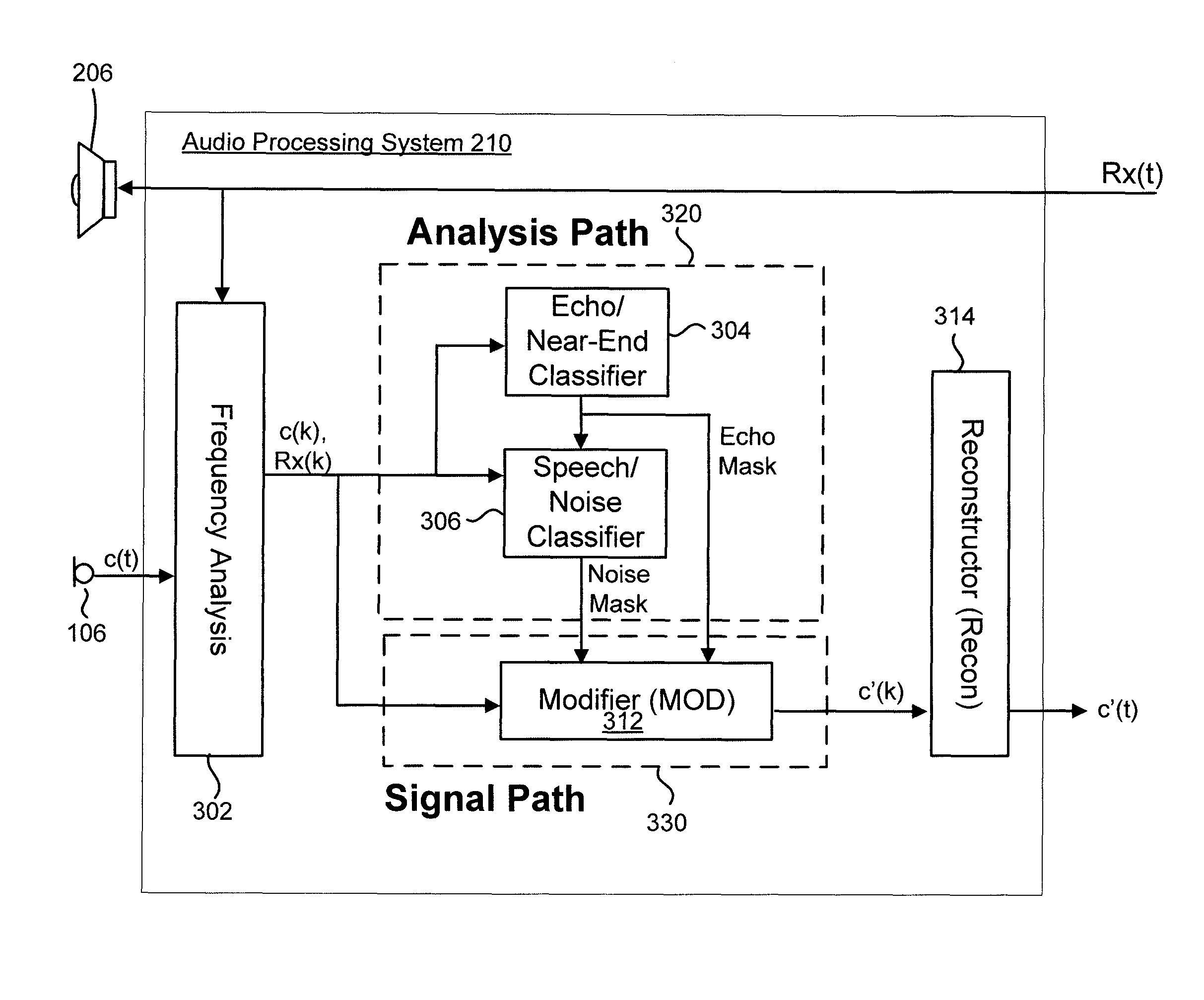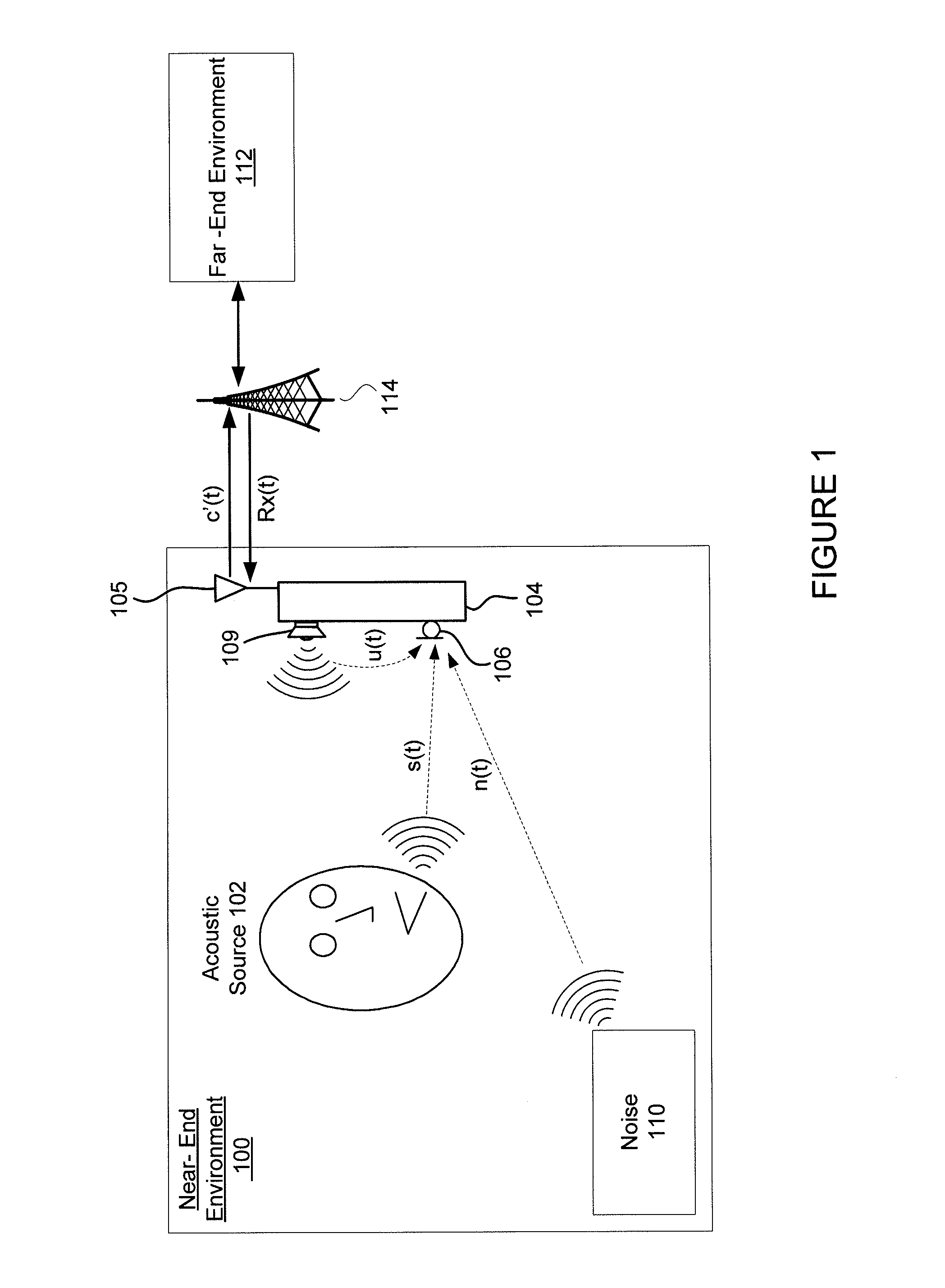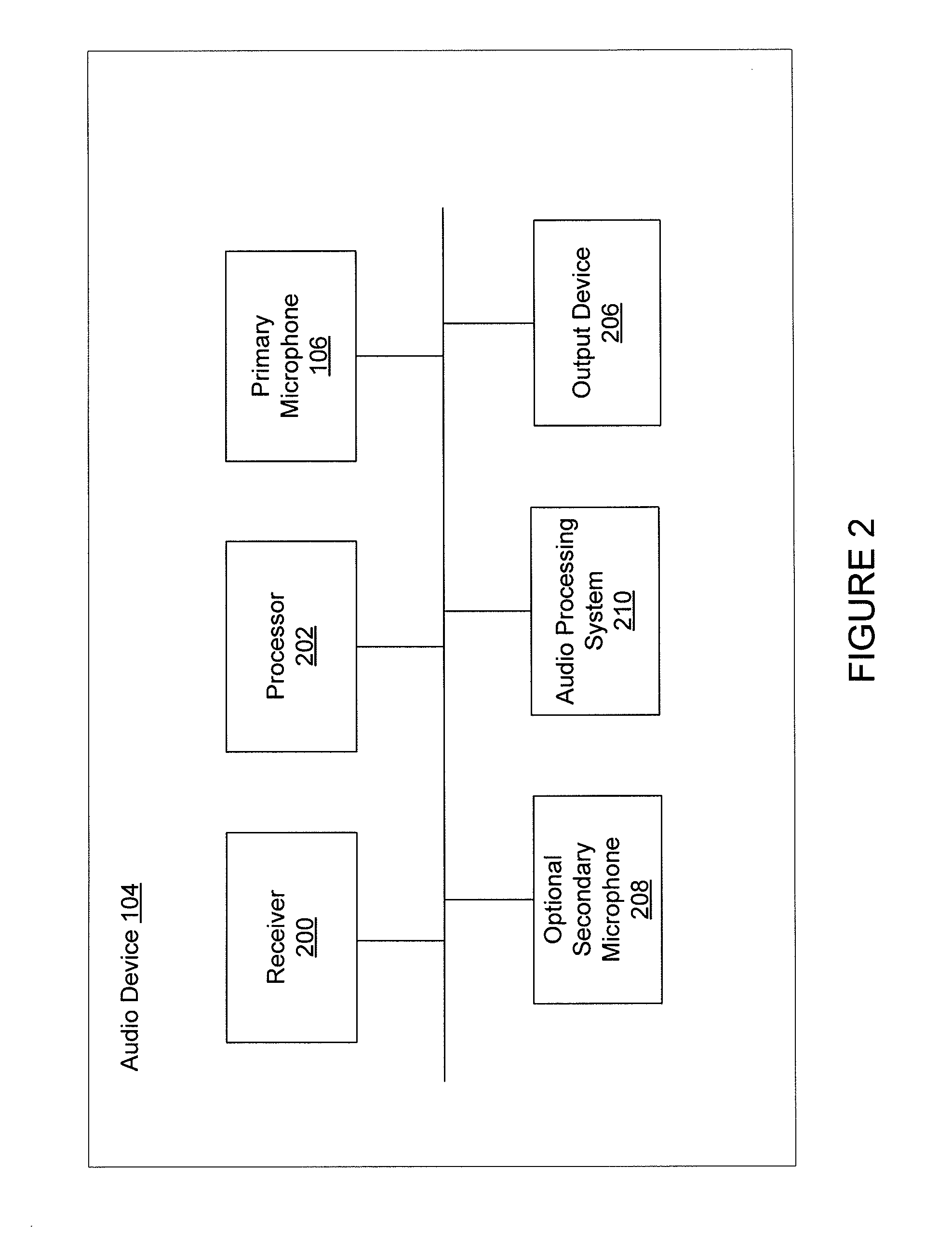Robust noise suppression system in adverse echo conditions
a noise suppression and echo technology, applied in the field of audio processing, can solve the problems of affecting normal communication, delay and distortion, annoying, etc., and achieve the effect of preventing adaptation and reducing echo and near-end noise signals
- Summary
- Abstract
- Description
- Claims
- Application Information
AI Technical Summary
Benefits of technology
Problems solved by technology
Method used
Image
Examples
Embodiment Construction
[0026]The present technology provides adaptive noise and echo reduction of an acoustic signal which can overcome or substantially alleviate problems associated with mistaken adaptation of speech and noise models to acoustic echo. The present technology carries out a multi-faceted analysis to identify echo within the near-end acoustic signal to derive an echo model. Echo classification information regarding the derived echo model is then utilized to build near-end speech and noise models. These echo, speech, and noise models are then used to generate one or more signal modifications applied to the acoustic signal to preserve the desired near-end speech signal and reduce the echo and near-end noise signals. By building near-end speech and noise models utilizing the echo classification information, the present technology can prevent adaptation of the near-end speech and noise models to the acoustic echo.
[0027]The echo classification information is derived by an echo / near-end classifier...
PUM
 Login to View More
Login to View More Abstract
Description
Claims
Application Information
 Login to View More
Login to View More - R&D
- Intellectual Property
- Life Sciences
- Materials
- Tech Scout
- Unparalleled Data Quality
- Higher Quality Content
- 60% Fewer Hallucinations
Browse by: Latest US Patents, China's latest patents, Technical Efficacy Thesaurus, Application Domain, Technology Topic, Popular Technical Reports.
© 2025 PatSnap. All rights reserved.Legal|Privacy policy|Modern Slavery Act Transparency Statement|Sitemap|About US| Contact US: help@patsnap.com



